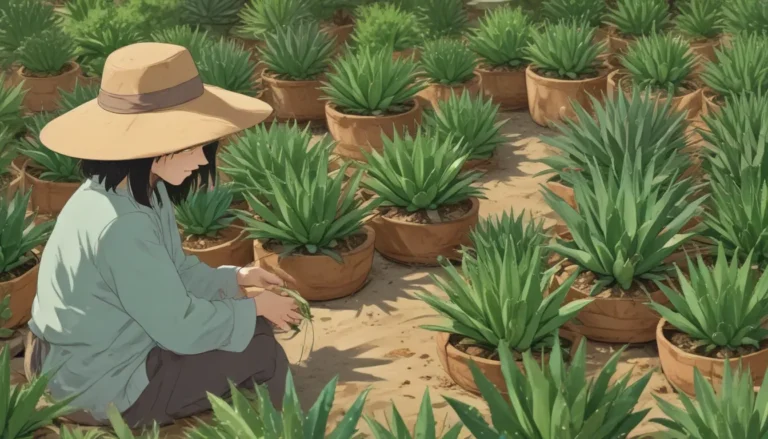Growing Lacinato (Dinosaur) Kale: A Comprehensive Guide

Lacinato kale, also known as Tuscan or Dinosaur kale, is a delightful leafy green that is not only easy to grow but is also a nutritional powerhouse. Its long, narrow leaves make it a favorite for cooking, and its ornamental value adds a touch of elegance to any garden. In this article, I will guide you through everything you need to know about growing, harvesting, preserving, and cooking with Lacinato kale.
What Is Lacinato Kale?
Lacinato kale, also known as Italian or Tuscan kale, originated in Italy, particularly popular in the Tuscany region. Its dark blue-green strap-shaped foliage has a bumpy, reptile skin-like texture, earning it the nickname “dinosaur kale.” This biennial kale is a member of the Brassicaceae family and is considered a highly nutritious superfood.
Lacinato kale is easy to grow, with an upright habit that makes harvesting a breeze. It is especially well-suited for cold climates and holds up well in summer heat. Its ornamental value adds a touch of beauty to any garden, making it a versatile choice for both food production and landscaping.
How to Grow
Growing Lacinato kale is a straightforward process that starts with sowing seeds in spring or fall. Direct sow the seeds one to two weeks before the last spring frost or ten to twelve weeks before the first fall frost. Alternatively, start seedlings indoors six weeks before transplanting. Choose a sunny location with well-drained soil enriched with organic matter.
Water Lacinato kale regularly, especially during hot weather, and provide support as needed. To save seeds for future plantings, let the plants overwinter and collect seeds after flowering in the second year. Consider companion planting with beans, onions, garlic, or tomatoes to enhance growth and deter pests.
Cultivars to Select
In addition to the standard ‘Lacinato’ variety, several cultivars offer unique flavors and characteristics:
- Black Magic: An improved dinosaur-type kale with mild flavor and excellent cold tolerance.
- Dazzling Blue: A hybrid of ‘Lacinato’ and ‘Redbor’ kale, known for its cold hardiness and colorful leaves.
- Lacinato: The original Tuscan-type kale with dark blue-green strap-shaped leaves and a rich history.
Selecting the right cultivar based on your preferences and growing conditions can enhance your kale-growing experience.
Managing Pests and Disease
Pests such as cabbage worms, aphids, and grasshoppers can damage Lacinato kale. Protect your plants by keeping weeds at bay, inspecting them regularly, and utilizing predatory insects as natural control methods. Proper sanitation and maintenance practices can help prevent common diseases like black rot and downy mildew.
Harvesting
Harvest Lacinato kale when the leaves are small for baby greens or allow them to mature for full-size foliage. Harvest the largest bottom leaves first to encourage continuous growth. Proper harvesting techniques can promote plant productivity and ensure a bountiful supply of fresh greens.
Preserving
Preserving Lacinato kale for long-term use involves freezing, dehydrating, or fermenting the leaves. Before preservation, clean the leaves and stems thoroughly. Freezing after blanching or cooking maintains flavor and texture, while dehydration and fermentation offer alternative methods for storing excess harvest.
- Freezing: Blanch the leaves before freezing for optimal flavor preservation.
- Dehydrating: Dry the kale in an oven or dehydrator for long-term storage.
- Fermenting: Transform the kale into probiotic-rich lacto-fermented pickles for a tangy twist.
Experiment with different preservation techniques to enjoy Lacinato kale year-round in various culinary creations.
Recipes and Cooking Ideas
Lacinato kale’s versatility makes it a star ingredient in various dishes, from salads and soups to pesto and pasta. Its mild flavor and easy-to-clean leaves make it a favorite for both raw and cooked preparations. Try making kale almond pesto or butternut squash and kale pasta salad for a flavorful culinary experience.
Experiment with different cooking methods to discover your favorite way to enjoy Lacinato kale’s rich flavor and nutritional benefits. Include this nutritious leafy green in your diet for a delicious and wholesome addition to your meals.
Quick Reference Growing Guide
Here is a quick reference guide for growing Lacinato kale, including basic care instructions, companion planting ideas, and common pests and diseases to watch out for.
- Plant Type: Biennial leafy green vegetable
- Native to: The Mediterranean and Asia Minor
- Hardiness (USDA Zone): 2-11
- Exposure: Full sun, part shade
- Time to Maturity: 60-85 days
- Spacing: 12 inches
- Water Needs: Moderate
- Common Pests: Aphids, cabbage worms, root knot nematodes
- Common Diseases: Alternaria leaf spot, black rot, damping off
By following these guidelines, you can successfully grow your own garden dino-mite of Lacinato kale and enjoy its numerous benefits throughout the growing season.
In conclusion, Lacinato kale is a versatile, nutritious, and visually appealing addition to any garden. By following these growing tips, you can cultivate a thriving crop of this beloved leafy green and explore a variety of culinary possibilities. Whether you’re a seasoned gardener or a beginner, growing Lacinato kale offers a rewarding experience that enriches both your plate and your garden. Share your love for dinosaur kale with us in the comments below and start your kale-growing adventure today!





